#revenge of the shinobi
Photo

Revenge of the Shinobi (Sega/1989)
325 notes
·
View notes
Text
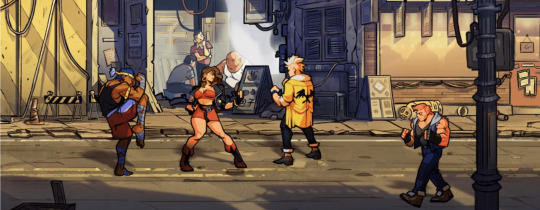
After playing Streets of Rage 4, I hope they'll make a new Super Shinobi game too, maybe titled : Return of the Shinobi.
As much as I love Ghost of Tsushima and Assassin's Creed, I love an retro type of games which reminds me of old school SEGA games.
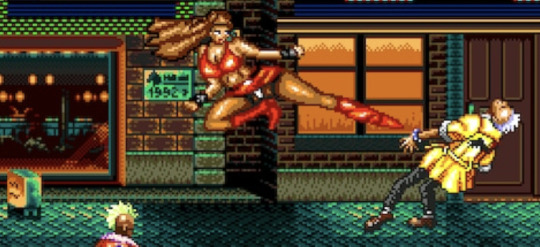
What I love about Streets of Rage 4 is that it is something familiar with a touch of nostalgia of the original but new and refreshing.
Imagine if they were to do the same with Super Shinobi, with similar art style and same music composer as the original.
But this time it takes place across all prefectures of Japan instead of going from Japan to America.
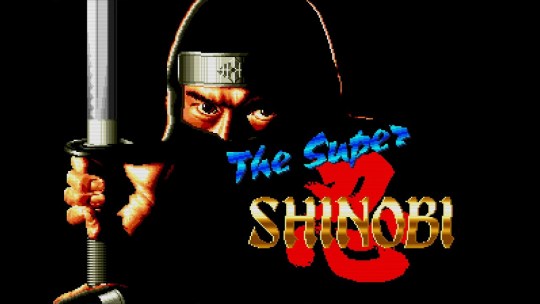
Joe Musashi, the legendary Shinobi returns beginning his journey from Aomori Prefecture all the way down to Kyushu.
So gamers feel like they are traveling across Japan themselves, fighting various villains against the familiar backdrops.
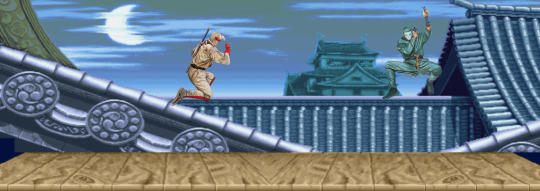
First mission starts of at Aomori Castle where the villain ninja, Neo Zeed, attacked his dojo, killed his master and kidnapped his fiancee.

Then he goes to Sendai, the city of Date Masamune, where he fought with his descendant who sides with the villainous ninja.
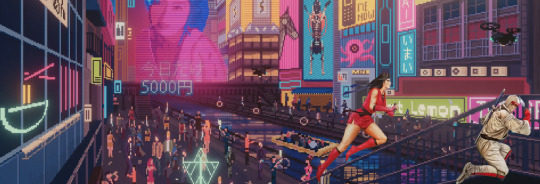
Then he goes further down to other prefectures, eventually going to Kansai where he fights female ninjas at Dotonbori, Osaka.
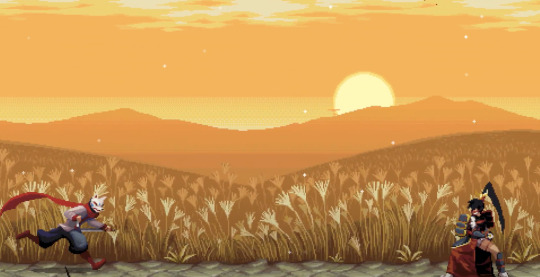
Then he goes Nara prefecture to fight a Onna Bugeisha, a female Samurai.
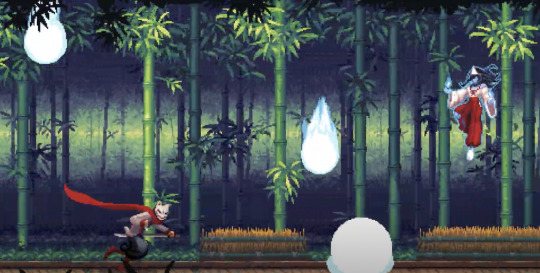
Then the bamboo forest of Kyoto to fight a Yokai disguised as a Miko or Shrine Maiden or Gion to fight a Yokai disguised as a Geisha.
Then he proceed to other places like Aizu, Tokyo, Hikone, Lake Biwa, Mount Koya, Kobe, Chinatown, Himeji, Hiroshima, Nagasaki, etc.
Each prefecture with its own unique songs, theme, villains, backdrops and history.

The final stage is at the city of Fukuoka, going up the high rise building to confront the Neo Zeed himself.
Maybe Neo Zeed is a descendant of a Samurai warlord who wants revenge against the Shinobi's clan since the Sengoku Jidai.
I'm surprised that no game studio have made this by now. There's a lot of potential to develop to get both new and existing fans.
#sega#streets of rage#streets of rage 4#nintendo#super shinobi#revenge of the shinobi#198x#street fighter#shinobi#ninja#japan#ghost of tsushima#assassin's creed#video games#samurai#miko#shrine maiden
4 notes
·
View notes
Photo


Cover Art
'The Revenge of Shinobi'
SEGA Mega Drive
Support us on Patreon
447 notes
·
View notes
Text
Criticism of Blue Eyed Samurai
Well, I just watched Blue Eyed Samurai. Been spotting several positive clickbait thumbnails of it, so even though I didn't have high expectations based on the trailer, I gave it a go. And well, it was what I feared it was. I still enjoyed it though! And it's an engaging story, just not what I wish it was. Anyways, I wrote a comment on Reddit about it, which I thought I'd repost here.
Edit: I ended up going in and reordering some paragraphs under headings, as people on Reddit replied to by comment. Noticing people are nitpicking the historical accuracy of my commentary, which wasn't really what I was concerned about. It's more that certain cues in these stories make me expect certain things.
The main point of much of this text is to look into what makes Blue Eyed Samurai a noticeably American story, by comparing it to other jidaigeki stories with a similar setting made for and by Asian people, and stories set in Asia made by Americans (for Americans).
🚧 NB! I'm still working on the text. Text marked in cursive are just notes, so please ignore them for now! 🚧
Asian stories
So, this isn't the first time we've gotten an Asian story told by Americans (for Americans). And that in of itself doesn't necessarily make the show unwatchable. Beyond the cases of whitewashing and yellowface in Hollywood, we can also find a few love letters to Asian media.
For China, we have Kung Fu Panda, a love letter to Kung Fu movies with a Chinatown aesthetic. For Asian ethnicities overall, we have Avatar the Last Airbender. And for Japan, we have stories like the Ghost of Tsushima and Shogun.
As a period drama fan, what I expect coming into these shows are generally other pieces in the same genre, that is Asian stories told by Asians. Perhaps due to the lack of any relevant Asian American genre. In the case of Blue Eyed Samurai, I was expecting a jidaigeki more in the lines of Azumi, Oshin or Princess Kaguya. However, I felt that Blue Eyed Samurai fell short, even by the standard of other Asian stories told by Americans for Americans.
Overall, the story's theme is two fold: action and feminism.
Action and martial arts

While Blue Eyed Samurai throws around words like samurai and honor, it doesn't appear to actually understand what these entail. Instead, it feels like it only focuses on the superficial badassery of it. In contrast, Ghost of Tsushima did a great job with its Japanese localization. Although some parts was a little bit off still, they salvaged this by centering their themes around bushido culture and made references to terms used there, and the visuals references Japanese aesthetics of the transient seasons and impermanence, which is commonly used in haiku poetry. It features seasonal environments such as ginko leaves, reed, maple, and spider lilies to mention some. The same can be said for Shogun, which is more about the tension being lost in translation, and where especially Mariko recited actual Japanese poems at several occassions.

Meanwhile, Kung Fu Panda also has the tropes and artefacts of Chinese wuxia story, but it is ultimately based on Chinatown. A theme park-esque idea of China designed by and to cater to white people, as a Chinese American defense mechanism. Yet, it stands on its own as an American love letter to Chinese kung fu films.
In the west, many use Kung Fu Panda as an argument for successful orientalism. However, Accented Cinema points out, it may have more to do with China's own failure in representing themselves, and that Kung Fu Panda's lesson was just what China needed at that time: To stop doubting and to learn to love themselves. Even in the face of the traditional Chinese fantasy genre (wuxia and xianxia) losing foothold in Asia, they can still stay themselves as a new generation reinvents the genre. And the new stories coming out of China seems to have taken this classic hollywood message to heart.
I'll use this opportunity to shoutout some stories by China to come out of this new era: The Legend of Hei, the White Snake, The Untamed, Black Myth: Wukong, Genshin Impact, etc.

In contrast, Blue Eyed Samurai has the same attention to detail when it comes to the artifacts of a jidaigeki story. But it falls short, because it lacks in as meaningful a message as Kung Fu Panda had, and somehow lacks in the tropes (or whatever it's called?) that you'd expect to see in a jidaigeki. Instead, it focuses on superficial badassery and western feminism, and it feels like it clearly caters to white people's ideas and desires.
But overall, great choreography and compositing, engaging story and characters ... Blue Eyed Samurai is good, but does veer into the uncanny valley for me, which I know was an issue Asians had with ATLA. Guess I felt it a little bit more with Blue Eyed Samurai due how much (unrealistic) violence and (meaningless) sex is glorified, and made me question what exactly the overall moral message of the story was supposed to be beyond simply "revenge plots are cool but also destructive." As somebody else said, it's giving "guts and tits for the people."
I was hoping for something like Azumi
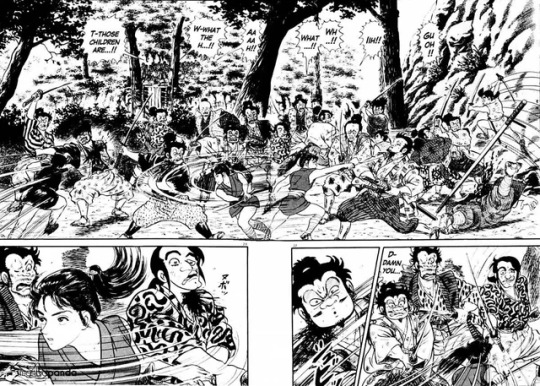
I do not mean that I wanted Blue Eyed Samurai (BES) to romanticize bushido and samurai. However, I did want it to explore these concept, because they made such a big deal out of it. The closest comparison I can make and what I was actually hoping for when going into BES, was something more like the manga Azumi.
The main character of both series, Mizu and Azumi, are similar in several aspects. Both are orphaned women who grew up to become fearsome assassins, whose sworsmanship is so incredible that they're able to fight off hordes of men singlehandedly. Additionally, both are mixed race, though where Azumi only has blue-ish eyes, Azumi has actual blue eyes. Additionally, both work as assassins during the sakoku policy, though while Azumi lives around the time of Tokugawa Ieyasu in the 16th century, at the start of the policy, Mizu lives further along in the 17th century.

Azumi is a gritty look into (among other things) both shinobi and samurai that does not romanticize either, and has won an award for its exploration of these concepts in relation to buddhism. In fact, everyone in Azumi suffers. The only one who is perhaps glorified is Azumi, who many critics compare to a boddhisattva.
Throughout the story, Azumi works to not become too attached to earthly comforts, but still suffers because of her attachment to her companions. As Azumi completes her pruning missions for her boss (the Buddhist monk Tenkai), she accumulates a lot of bad karma in the form of endless waves of people pursuing her for either revenge, the bounty on her head, the thrill of defeating a master swordswoman, etc. Because of it, 90% of her closest companions SPOILER die, and many of her friends are raped or permanently maimed, and has to deal with the trauma and practical inconveniences of it. Often because they are caught in the crossfire between Azumi's targets or those who pursue her.
By the end of the story, Azumi still ends up making new companions like usual and her boss continues wanting to send her on pruning missions. But she decides to leave them all behind, so that those she cares about will not be affected by her bad karma again. She knows she will have to stay on the road indefinitely and will never really be able to enjoy the comforts of settling down, because of her pursuers. The series makes the buddhist argument that earthly attachment in general causes suffering, and Azumi is enlightened by abandoning those attachments and by facing her karma, although that does not mean she will not end up with a violent death. The story ends openly with Azumi wandering off into obscurity.
Mizu is not a samurai
We could argue that she is a ronin, but then she'd technically must've been serving a lord as a samurai in the past. She should be at least be a tiny bit concerned with chivalry; At least enough to discuss or talk about it, which we know isn't the case. Mizu is closer to being a shinobi/ninja, since her goal is to assassinate her 4 maybe fathers. Another thing Mizu shares with shinobi is that both are often criticised by samurai because of their penchant for ambushes and lack of concern for bushido / warriors code. Yet she breaks the mold of being a shinobi, since she doesn't really sneak around in (civilian) disguise and will openly brawl her way through a dojo and into a fort. In this aspect, Azumi is much more like a shinobi.
While Mizu's motivation is simply revenge for the injustice she and her mother suffered at the hands of the gaijin faction, in Azumi the motivation is to prune the country like a bonsai tree off individuals which may threathen a new age of peace, and prevent the country from slipping back into the civil war that marked the Sengoku period.
But where characters in Blue Eyed Samurai is heavily protected by plot armor, allowing Mizu to be an almost invincible pin cushion, no one is safe in Azumi and injured characters requires months to recover and heal from cuts.

While writing this, I recalled that in episode 5, they interjected a story about a samurai marrying and fathering a child with a woman who descended from an enemy clan. He kills both her and their son, which turns her into a onryō. Mizu being an Onryō works, but I am left questioning how this fits into the story beyond its symbolism, as there's been no explicit supernatural elements in the story. Mizu is bullied for being the (devil) spawn of a quote "white devil" in childhood, I think it would be more interesting if they called her a "white ghost," since onryos (which could represent Mizu) are a type of vengeful female ghost. Furthermore, Taigen often compares Mizu to a dog, esp. when she does not live up to the samurai standards he holds her to. Not sure where that fits in either..
Orientalism
So the statement about samurai criticising shinobi was called out as orientalist. This was my reply:
As for orientalism, I guess Blue Eye Samurai is being orientalist then, which I was kinda feeling while watching but didn't really put into words. It's pretty stereotypical to connect Japanese with honor and samurai after all, contributing to why I felt the show was very American.
In the sense of samurai simply meaning warrior, then we can consider Mizu a samurai. But Taigen (and Akemi) connects being a samurai with honor and complains about fair play. By making this connection, he invokes bushido/chivalry and excludes people who ambush others like assassins from the definition of being a samurai, and by extension criticises assassins like ninjas for not shying away from "dishonorable" ambushes. To restore his honor, Taigen wants to arrange a formal duel and even writes up a challenge letter (hatashijou), which makes sense in terms of the dojo trope. But well, the series does contradict itself a lot in favor of cool one liners, and what it means to be a samurai or knight has changed throughout history.
Time period
Some people began nitpicking the historical accuracy of my commentary, which wasn't really what I was concerned about. I am open to artistic liberty. However, with BES it was a little bit harder, since they made so many historical references and leaned into the jidaigeki genre, but then broke it in ways that came off as uncanny to me. Looking back, I guess this uncanny feeling was the orientalism letting itself be known, though I couldn't put it into words back then.
As jidaigeki is a subgenre of historical stories, certain cues does make me expect certain things. Like when I see an English-speaking gaijin as the antagonist, I would make the connection that this story is probably set sometime after the Americans forced Japan to open up for trade in the 1800s. Yet this expectation is then contradicted when I learn that no foreigners are allowed in Japan yet due to the Sakoku policy, which makes me wonder what this Irishman is doing here all alone centuries too early and how he even managed to climb to such a powerful position while being so isolated.
Gaijins as antagonists
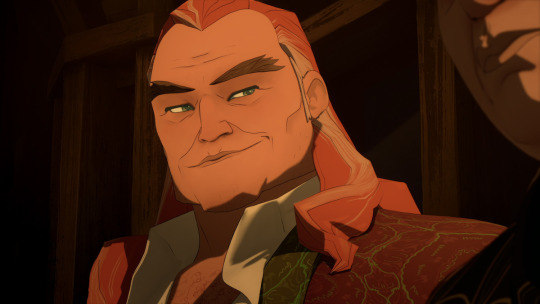
Why an Irishman as the gaijin antagonist? It'd make more sense if it was a portuguese or dutch. If Blue Eyed Samurai is set in 17th century Edo Japan, it's a long time off when the Americans forced Japan to put down the sakoku policy, and even then, why Britain/London? If anything, Japan and Britain liked each other enough to form an alliance for their shared fear of Russia.
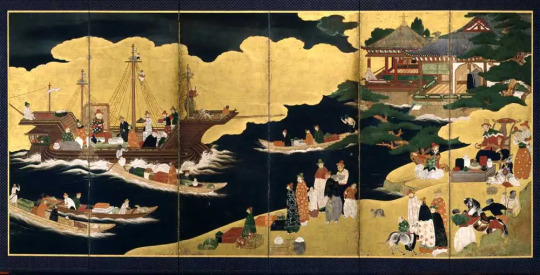

Why not other colonial powers who were actually active in Japan and Asia overall at the time (the Dutch) or the ones who caused Christianity to be banned during the sakoku (the Portuguese).
My first thought of a precedent goes to Konishi Shizune, the Christian revolutionary leader in Azumi who's also mixed race like Azumi, which is based on the historical Amakusa Shiro.

(Depictions of Gaijins: Americans during postwar Japan in Hajime no Ippo. Senator Armstrong in Metal Gear Solid)
Japanese in Europe
With Mizu heading to Europe, I came across people discussing the plot armor and how Mizu wouldn't stand a chance against the guns nor London police. It came off as kind of white supremacist, and the entire thread was locked because of unsolicited opinions from outsiders.
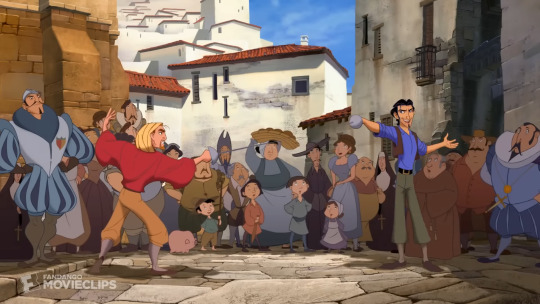
To be fair, Japan had guns too at the time. According to Netflix themselves, Blue Eye Samurai takes place in the 1600s. If that's the case, it means that the guns were mostly muskets, rifles and pistols which took time to load, so people did still use swords even in Europe. And only a century earlier in the 1500s, when Dreamwork's El Dorado is set, people would still use firearms and crossbows side by side, and Oda Nobunaga also used firearms in his own warfare during the sengoku period.
Also, the police didn't exist yet, since the UK police were created in the late 1700s. As for the London battalion or royal guards storming her, it'd either amount to when she was stormed by the hand claw guys. The plot armor in the first season was a lot imo even then though. But sneaking up on them depends on the terrain and context, so I can see it happening.

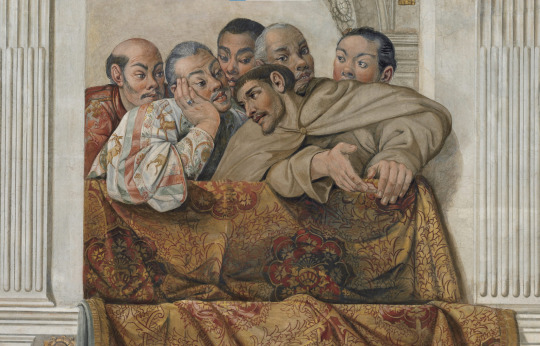
Furthermore, it's not unrealistic for Japanese people to travel to Europe, because there's historical precedence for this. In 1613, Hasekura Tsunenaga was sent on a diplomatic mission to negotiate with the pope and the king of Spain, and some of his men even stayed behind to form the Japon clan in Spain. The expedition took 7 years, and ironically enough, once he returned, christianity had already been banned in Japan. The people who still kept the Christian faith in spite of this came to be known as kakure kirishitan.
Debauchery means it's for adults ..
The way characters (esp. Mizu) will throw out badass oneliners as if on a treadmill, only to contradict exactly what she said as short as 5 seconds later does mess with my suspension of disbelief.
The story also goes into protitution and patriarchy, though it also felt superficial to me. If anything it feels like an excuse for fan service, similar to Game of Thrones in a sense. Like they know that sex sells, and that's what "the audience really wants." That said, again I enjoyed both GOT and Blue Eye Samurai, even though some may laconically break the former down to "dragons and tits" and the latter to "guts and tits".
Token representation
Mizu's apprentice was born without hands, which could have brought about an interesting exploration of disability. But instead, he's relegated to being a quirky sidekick and comedic relief..
BES is an American story
Blue Eyed Samurai has all the visual motifs of a Japanese samurai story (jidaigeki), but the tropes and logic is extremely American. It does get the artifacts and set dressing of a jidaigeki story right (surprisingly accurate at some points), which is why it triggered the uncanny valley for me sometimes. When certain artifacts and set ups appeared, I expected it to follow certain tropes I'm used to from jidaigeki, but it didn't really do that.
Patriarchy and gender roles
While I understand and appreciate your critique, I don't think the narrative is grounded in realism. It's more like expressing the need that women do have to see themselves in the shoes of a physically invincible protagonist. Also the motivation isn't simply revenge - what has happened to Mizu has convinced that her very existence is suffering. She's internalized the hate to an extent that it no longer matters whether she lives or dies. She will slowly change as a person and her motivations will also change, which I hope we get to see . All the characters are somewhere trying to rebel against their gender roles, and that I feel is the 'message'. Also as far as the right antagonist to show goes, Fowler seems an indictment of British colonialism a few centuries too soon, but his attitudes aren't unfamiliar. At all.
Blue Eyed Samurai doesn't explore the concepts it references or markets itself with, but seems to throw them around because samurai and honor sounds cool and is a stereotypically Japanese/Sinosphere thing. Instead it'd rather explore gender roles and patriarchy. And the character Blue Eyed Samurai primarily uses to explore these themes with isn't the titular protagonist, but rather Princess Akemi.
But Akemi's struggles with patriarchy, also comes off as more a Western suffragette story than a Sinosphere one.
The Princess as a Caged Bird
Other stories about gender roles and patriarchy in ancient Japan to which we can compare this to is probably Isao Takahata's Princess Kaguya, though this one is probably set long before BES in the Heian period.
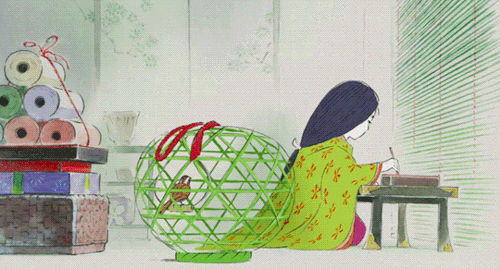
Like in Kaguya, the ohaguro set is presented as a symbol of oppression for Akemi. However, instead of being explicitly oppressed by outside forces like Akemi, Kaguya is instead pressured by societies and her father's idea of what a princess should be to become happy. Throughout the film, Kaguya questions what it is all for and even counters against her governess that "a princess is not a human then!"

Princess Kaguya as a roadside flower. To be plucked in a moment of fancy, and neglected once savored and bored. Merely a trophy to be won and stowed away in a display cabinet.
The film explores what makes life worth living, by exploring the difference between humanity and moon people.
Filial piety. Fulfilling your own dreams through your offspring. Showing off achievements to relatives (accumulating merit).
Geisha and maiko in contrast to the Oiran of the red light district. Streetwalkers. Prostitution - the world's oldest profession.
Oda Nobunaga's younger sister in Nobunaga Concerto and Azumi.
Hypergamy. Tradition of men being adopted into the wife's household. The Fujiwara clan of the Heian period, who continuously married their women into the imperial family for generations. Attitudes around cheating and monogamy (Genji Monogatari).
The Fallacy of the Stereotypical Asian woman


Oshin - Resilience and endurance.

Asian women as firecrackers. There's a reason why the stereotype of Tiger Mom even came to be, because Asian women and people in general are not weak and strictly submissive, although they are often mistaken as doormats.
Honne and tatemae
Yamato Nadeshiko
While writing about this, I ended up going on a tangent about Asian women, which you can read here: The Fallacy of the Stereotypical Asian Woman.
Gender roles in Genderbender
Kaze Hikaru
Ryou
Torikaebaya Monogatari, where a brother and sister in the Heian period is gender mixed at birth, to fulfil gender roles they're more "suited" for according to societal expectations. Another Heian period text about a guy who crossdresses as a woman to get close to a woman he has a crush on.
Gender fluidity has been the norm throughout most of history.
A wolf in sheep's clothing
I guess the show is more concerned about gender roles and patriarchy. I'm actually not all that concerned with historical accuracy, but I couldn't help but be thrown off by how it felt like vastly different time periods (and thus different expectations in terms of jidaigeki tropes) were meshed together. I still stand by that the show is a very (overseas Asian/) (Asian) American narrative, which made it uncanny how accurate it still was in terms of getting the artefacts etc. of a jidaigeki right. Sort of like a "wolf in sheeps clothing," though that doesn't make it a bad thing. For example, Akemi feels more like a Western suffragette, rather than an Asian feminist. Yet the ohaguro set etc. may be a reference to Isao Takahata's Princess Kaguya, which is about feminism.
The story came off as stereotypical to me. Yet it does get the artifacts and set dressing of a jidaigeki story right (surprisingly accurate at some points). I did cringe at some points or feel the uncanny valley, but again overall the show was engaging and enjoyable.
I've enjoyed other orientalist stories before, such as Kung Fu Panda and Avatar the Last Airbender. I've also enjoyed occidentalist stories like mohuan and isekai. Yet something with Blue Eye Samurai made me cringe sometimes. Comparing it to the others I've mentioned, perhaps it's because it's set in a more non-fantastical setting as opposed to a jianghu of sorts idk. Blue Eye Samurai is still entertaining though, and may be the start of a new genre.
It's hard to explain what it feels like for people who don't have the same cultural references, so here's an example of occidentalism. I noticed that when Genshin Impact (a Chinese game) released the new Fontaine region where they decided to mix Britain, Italy, France etc., which people claimed is just plain weird haha. But Fontaine has still been well received regardless it seems. On the other hand, I still cringe every time I see Senator Armstrong in Metal Gear Solid.
Historical references
Random, but here's a list of different artifacts and set dressings that appeared in the show. The little theatre play about the ronin and his wife uses kurogo (black clad actors) to manipulate the dolls, which was novel to see. Previously I've mostly watched kurogo being used to manipulate perspective such as in this Matrix Ping Pong skit and the Tokyo 2020 pictogram opening ceremony. Traditionally, Kurogo is used in Kabuki to create special effects and are supposed to be invisible to the audience.

Mizu's husband uses a naginata, which is basically a spear. Although also used by warriors in general, it was often used by women.

#Blue Eyed Samurai#Netflix#review#criticism#Azumi#Kung Fu Panda#Ghost of Tsushima#Avatar the Last Airbender#samurai#bushido#shinobi#ninja#onryo#gaijin#Sakoku#karma#revenge#uncanny valley#kurogo#feminism#orientalism#occidentalism#decolonization#blog
96 notes
·
View notes
Text
Kakashi: *shows countless times in canon he cares about his students and wants to train them, but a lot of that training is outright skipped for ‘more interesting storyline’
Weirdo’s: nah, Kakashi didn’t teach any of his student’s anything and didn’t care about them at all.
#like god DAMN#Y’all can’t handle an imperfect teach can you?#you can’t handle a character who makes mistakes but genuinly tried his hest#who was thrown into the job even though he did not ask for it#and STILL did his best#‘he doesn’t care about sakura’#WHY THE FUCK WOULD HE PROTECT HER AND CONTINUE TO SAVE HER IN ALMOST EVERY FIGHT IF HE DIDN’T CARE#‘he didn’t teach sakura anything’ yes the FUCK he did#he taught her chakra control which she obv excelled at#and a jonin level technique that allowed her to avoid being knocked out in the konoha crunch#and allowed her to wake Naruto up as well#‘he only ever tried to push his views on Sasuke’#no he didn’t#he only told Sasuke to stop seeking revenge when sasuke turned chidori#a move kakashi taught him to face a shinobi with an impenatable defence that WANTED TO KILL PEOPLE#there is a whole year before that where he knows Sasuke’s goal and never once tells him not to seek revenge#and him not being able to connect with Sasuke doesn’t mean his intentions were not genuine#sometimes people simply don’t understand each others trauamas and struggles#even when they desperatly want to#‘he was terrible to naruto’ fucking WHERE#He chose a specific sensei to teach Naruto chakra control#recogbizing it as Naruto’s weakness#and chose a dude who was a jonin specificlly because of his teaching capabilities#as for the fucking time skip#it’s made vary obviouse even before the team splits that Kakashi and all the other Jonin are on missions constantly#that’s the whole reason Shikamaru and a bunch of genin were sent after sasuke#instead of you know#FUCKING JONIN#None of the jonin were available#they were all on missions
45 notes
·
View notes
Text
And if someone is going to come and say something dumb like "justice is not revenge", please do so with exact indications on how to find Konoha's Supreme Court or the international Court for Human Rights in the shinobi world. Thank you.
#anti konoha#pro uchiha#Sasuke Uchiha#Revenge is Shinobi's justice#deal with it#I didn't make the rules
39 notes
·
View notes
Text

'The Revenge of Shinobi' Mega Drive (1989)
24 notes
·
View notes
Text










Yuzo Koshiro - The Revenge Of Shinobi | Data Discs | 2023 | White + Grey | /150
Limited 2LP collection with both the 2017 original pressing and the 2023 remastered pressing.
#yuzo koshiro#the revenge of shinobi#data discs#vinyl#colored vinyl#lp#music#records#record collection#vgm#video game music#soundtrack#sega#sega genesis#sega mega drive
13 notes
·
View notes
Photo
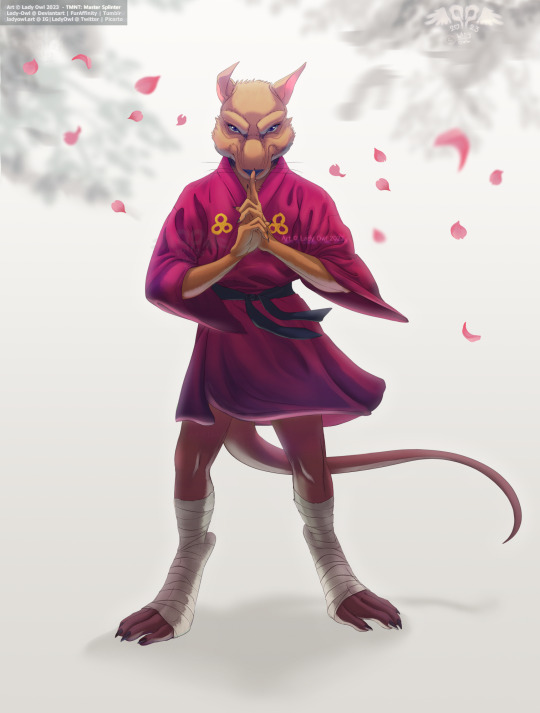
Celebrating my Birthday today (March 7th) with a fan art illustration of Master Splinter from TMNT.
Started this one late last year as a mix of the 1987 cartoon + Shredder's Revenge with an emphasis on his Japanese & Shinobi background.
[More of my TMNT Fan arts tagged here]
#Master Splinter#Hamato Yoshi#TMNT#Teenage Mutant Ninja Turtles#Shredder's Revenge#TMNT Splinter#1987 TMNT#TMNT Fan Art#Sakura#Cherry Blossoms#Ninja#Shinobi#Kuji-Kiri#九字切り#Ninjutsu#忍術#Mutant#Rat#Anthro#anthromorphic#Fan Art#Illustration#Digital Art#My Art
138 notes
·
View notes
Text
kishimoto might have been a mostly bad writer but he kinda went off with Breaking The Cycle as an overarching theme of the whole series
#naruto#the cycle of war and revenge that the shinobi world is trapped in from the small conflicts like chiyo’s instant hatred of kakashi for his#dad killing her kid to nagato’s whole character arc about war hurting him so and leading him to greater acts of violence#the tsuchikage and the old kages being cold military leaders at the beginning and then learning to set aside decades old grudges to look to#the future instead.#SASUKE’S WHOLE CHARACTER. GOD. need i say more.#yes i will. sasuke beginning his character arc as an avenger who will continue the cycle of violence by killing his brother. and then#turning his hatred on danzo and konoha once he sees his brother as a victim. he is naruto’s direct foil as naruto forgives everyone who’s#ever hurt him because he so desperately wants to end the cycle of hatred borne from war (JIRAIYA’S DREAM. DONT LOOK AT ME)#don’t even get me fucking STARTED on indra and asura and the uchihas and the senju and madara and hashirama.#two brothers who fought and their descendents and incarnations are fated to be locked in conflict. an endless cycle of war and violence#between yin and yang sun and moon. and because kishimoto went OFF with VOTE2 symbolism:#hashirama and madara coming so close to ending that cycle but in the end they fought to the death and their statues are built across the#waterfall from each other (the way they had been across the river from each other as kids) doing the hand sign for the beginning of kumite#and sasuke and naruto starting VOTE2 across from each other the way hashirama and madara were and ending the fight in the middle of the#river on top of the broken off hands of the statues performing the seal of reconciliation at the end of a kumite signalling the end of the#cycle of fate they were trapped in.#SOMETHIGN SOMETHING WE ARE TRAPPED IN MEANINGS THAT CIRCULATE LIKE BLOOD FR…………#ALSO the bijuu and humans being trapped in the cycle of hate and fear of each other. yeah. kishimoto really went off with The Themes here#nart.txt
13 notes
·
View notes
Text

The Revenge of Shinobi
5 notes
·
View notes
Text

❝ Revenge Is A Deadly Art ❞
6 notes
·
View notes
Text
Revenge of The Ninja (1983)
Watching Netflix's House of Ninjas, and realized the plot is similar and I love it! A former Ninja who wants to lead a normal life but circumstances pushed him back to being a Ninja once again. 🥷🏼
While Toshiro Mifune and Hiroyuki Sanada is forever remembered as the face of a Samurai, Sho Kosugi is forever remembered as the face of a Ninja.
#revenge of the ninja#sho kosugi#house of ninjas#ninja#shinobi#japan#hiroyuki sanada#toshiro mifune#samurai
21 notes
·
View notes
Photo

Intro
'Revenge Of Shinobi'
SEGA Mega Drive
197 notes
·
View notes
Text


paper cutouts
this is going to be part of a larger series with the original founders as samurai and shinobi with Mikey as their daimyo (please forgive me if I've used any of those words wrong)
You can also find these on my insta along with process videos
9 notes
·
View notes
Text

USA 1990
#USA1990#SEGA#HARDWARE#SEGA GENESIS#REVENGE OF SHINOBI#TRUXTON#GOLDEN AXE#SUPER MONACO GP#SUPER HANG ON
22 notes
·
View notes